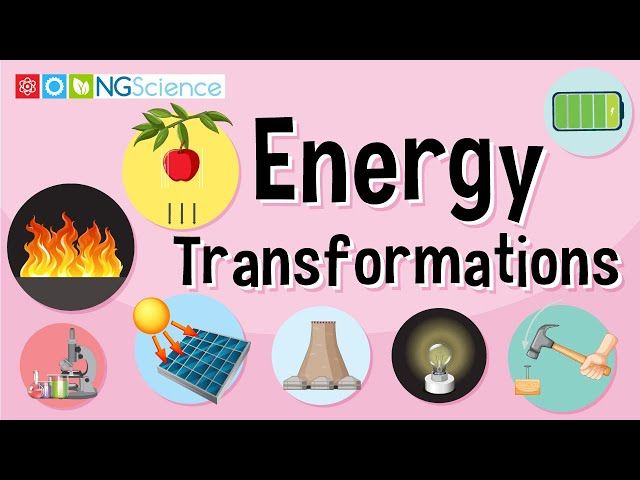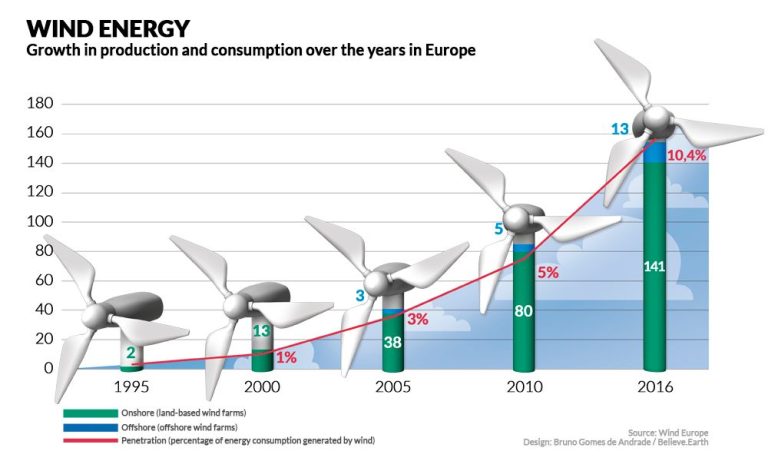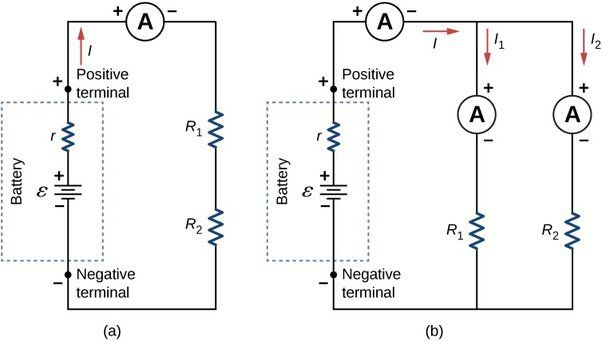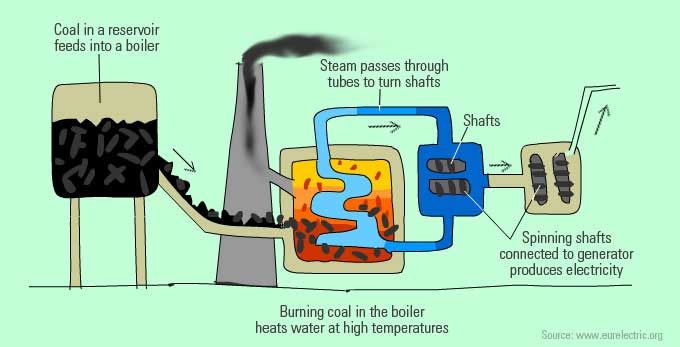How Is Electric Power Transmitted From A Power Station To House?
Electricity is an essential part of modern life that most of us take for granted. When you flip a light switch or plug in an appliance, electricity instantly flows to power it. But have you ever wondered about the journey that electricity takes to travel from a power station all the way to your home? This article will walk through the step-by-step process of how electric power is transmitted over long distances to ultimately power the devices in your house. We will follow the path from power generation at stations through transmission lines, substations, and distribution systems that together allow electricity to arrive at your electrical outlets.
Power Generation
Electricity is generated at power stations by converting other forms of energy into electrical energy. The main methods of generating electricity are:
Fossil Fuels
Fossil fuel power plants burn coal, oil, or natural gas to produce high pressure steam that spins a turbine connected to an electrical generator. This process converts the chemical energy in fossil fuels into mechanical energy and finally electrical energy. Fossil fuels like coal and natural gas are burned inside a boiler to heat water, producing high pressure steam that is piped to the turbine. As the steam pushes against the turbine blades, it causes the turbine shaft to rotate at high speeds. This turbine shaft is connected to a generator, so as the shaft spins, it rotates the magnets inside the generator, producing electricity via electromagnetic induction.
Nuclear Power
Nuclear power plants use the heat from nuclear fission reactions to produce steam. Uranium fuel rods inside the nuclear reactor generate enormous amounts of heat through controlled nuclear fission. This heat is used to boil water, producing pressurized steam that spins a turbine attached to an electrical generator, producing electricity.
Renewable Energy
Renewable sources like wind, solar, hydroelectric, geothermal and biomass can also be used to generate electricity:
- Wind turbines convert the kinetic energy of wind into electricity using rotating generator blades spun by the wind.
- Solar panels convert sunlight into direct current electricity using the photoelectric effect.
- Hydropower plants use falling or fast-flowing water to spin turbine blades and generate power.
- Geothermal plants tap into underground reservoirs of steam or hot water to produce electricity.
- Biomass plants burn plant and animal waste as fuel to boil water and produce steam that spins a turbine.
Step-up Transformers
After electricity is generated at the power plant, it goes through step-up transformers to increase the voltage before being transmitted long distances via transmission lines. Step-up transformers convert the low voltage electricity produced by the generators to much higher voltage levels, typically in the range of 155,000 to 765,000 volts.
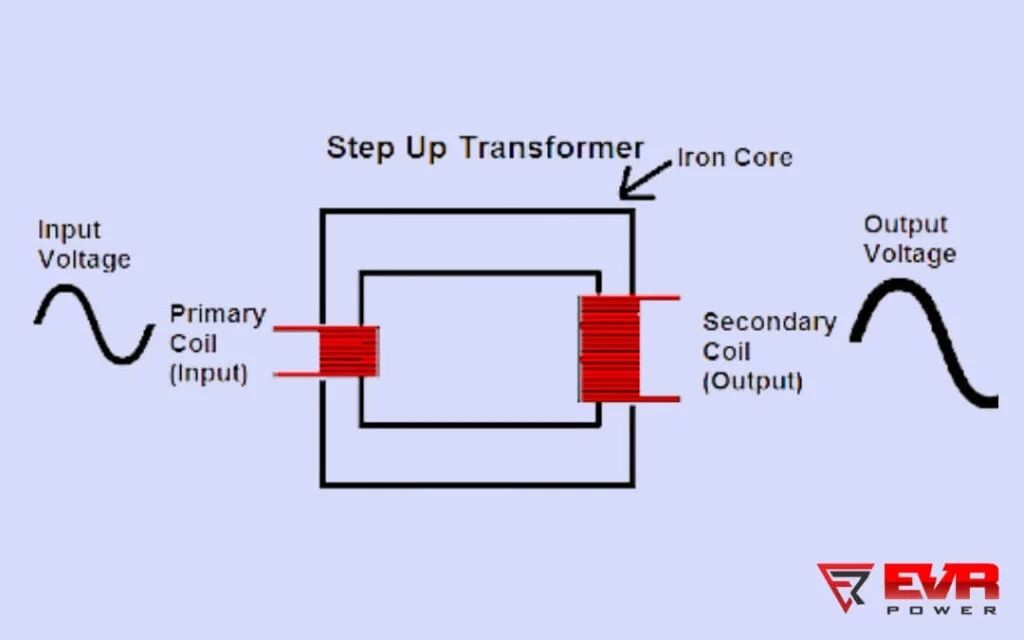
Transformers work based on the principles of electromagnetic induction. They contain primary and secondary coil windings around an iron core. When AC power from the generator flows through the primary winding, it creates a changing magnetic field in the core, inducing a higher voltage in the secondary winding. By adjusting the ratio of coils between the primary and secondary windings, the output voltage can be stepped up to the desired high voltage.
The reason high voltages are used for transmission is that it allows the power to be transmitted more efficiently over long distances. At higher voltages, lower electric current flows for the same amount of transmitted power, and lower current means less line losses and less waste. This allows the power to travel hundreds of miles with acceptable losses of only around 5-10%. Therefore, step-up transformers play a crucial role in increasing voltage to enable practical, efficient transmission of electricity from distant power plants to customers.
Transmission Lines
The transmission grid is the network of high voltage power lines that carry electricity over long distances from power plants to substations located near demand centers like cities and towns. The transmission system in the United States consists of approximately 200,000 miles of high voltage lines operating at 230,000 to 765,000 volts.
Transmission lines are built with aluminum conductor steel reinforced (ACSR) cable which contains aluminum wires wrapped around a steel core. The aluminum provides conductivity to carry the electric current while the steel core provides strength to support the weight of the line. Transmission towers and poles are made from steel lattices or wood and hold the lines high above the ground to avoid obstacles.
Transmission lines use high voltages because energy losses are proportional to the square of the current. By increasing the voltage, less current is required to transmit the same amount of power, resulting in lower losses. The use of high voltage allows the transmission of electricity over long distances more efficiently.
The transmission grid is centrally controlled by regional operators like PJM or MISO that monitor flows and manage congestion. Overall, the transmission system is crucial for enabling the long-distance transport of large amounts of electricity from distant power plants to load centers.
Substations
Substations play a critical role in the transmission of electricity by routing power from the high-voltage transmission lines to lower voltage distribution lines. At a substation, the voltage of the electricity is reduced (or “stepped down”) from transmission level voltages of 138 kV or higher down to distribution level voltages below 35 kV.
Substations contain transformers to reduce the voltages, along with circuit breakers, switches, monitoring and control equipment. The transformers step down the voltage in stages to the proper level for distribution. For example, a 500 kV transmission voltage may first be reduced to 115 kV at the substation before further reductions down to 12 kV distribution voltage.
Substations also serve as routing and control points where electricity from multiple transmission lines is merged and redirected. The layout of a substation enables the interconnection of transmission lines into and out of the substation. By closing and opening switches, operators can control which lines are connected, regulating and redirecting power flow.
Protection equipment at the substation also monitors power levels and can quickly isolate faults. If a transmission line is damaged by storms or other disruption, substation equipment will detect the fault and initiate circuit breakers to disconnect the line and stop the flow of electricity to the problem area. This prevents wider system damage and outages.
Step-down Transformers
After electricity has traveled through the high-voltage transmission lines, the voltage needs to be reduced before power can be distributed to homes and businesses. Step-down transformers are used to reduce the voltage from transmission levels to distribution levels.
Step-down transformers work through the principles of electromagnetic induction. They have a primary winding connected to the high voltage transmission lines, and a secondary winding connected to the lower voltage distribution lines. The primary winding has more turns of wire than the secondary winding.
When electricity passes through the primary winding, it creates a magnetic field. This magnetic field induces a current in the secondary winding. Since the secondary winding has fewer turns, the voltage is stepped down to a lower level according to the ratio of turns between the windings. This allows the transformers to reduce high transmission voltages like 345,000 volts down to lower distribution voltages like 13,200 volts.
Utilities use many step-down transformers to incrementally reduce the voltage before it reaches homes and businesses. Without these transformers, the high voltages used for efficient transmission would damage household electrical systems and pose a safety hazard.
Distribution Lines
After the electricity is stepped down to lower voltage levels at the distribution substations, it travels along distribution lines to get to local neighborhoods and communities. These distribution lines carry electricity at voltages ranging from 4kV to 35kV. The lower voltages allow the electricity to be distributed more safely and efficiently in residential and commercial areas.
Distribution lines are located above ground on utility poles or underground in areas where overhead lines would be impractical or unsafe. Overhead distribution lines consist of aluminum conductors suspended from utility poles by insulators. Underground distribution lines use insulated cables buried directly in the ground or encased in protective conduit. Underground lines are more expensive to install but help provide reliable service and avoid weather-related disruptions.
The distribution system is arranged in a branching network so the lines gradually divide into smaller branch lines to deliver electricity closer to end users. The lengths of distribution lines can vary from just a mile in dense urban areas up to 20 miles or more in rural locations. Distribution transformers placed along the lines help further reduce the voltage for delivery to homes and businesses.
Distribution Substations
Distribution substations play a critical role in delivering electricity to end users by transforming voltage from transmission level to distribution level. Within distribution substations, transformers reduce the high voltages from transmission lines down to lower levels that are safe for distribution.
For example, electricity may enter a distribution substation at 115,000 volts from the transmission system. Then, transformers at the substation will step that down to 12,000 volts or 4,000 volts for distribution to homes, businesses, and other customers. Without this important voltage reduction, the high transmission voltages would exceed safe levels for typical end use.
In addition to housing transformers, distribution substations also contain switches, protection devices, and monitoring equipment. The switches allow lines to be connected or isolated as needed for maintenance or during outages. Protection devices help detect faults and quickly deactivate problem lines to prevent damage. Monitoring equipment provides data on voltage, load, and other parameters to optimize operations.
After the voltage is reduced by transformers at the distribution substation, the lower voltage electricity can be safely routed through local distribution lines on utility poles or underground cables. These lines deliver power within neighborhoods and communities to ultimately reach homes and businesses at utilization voltage.
So in summary, distribution substations are vital facilities that regulate power from high transmission voltages down to lower distribution voltages that connect directly to local lines serving customers. This crucial stepping down of voltage enables safe, reliable electricity delivery to end users.
Service Drops
After power is distributed through distribution substations and lines, it must be delivered to individual buildings and homes. This last leg of the journey from power plant to home is accomplished by service drops.
Service drops are sets of cables that run from a house or building to the nearby power pole that contains the distribution lines. The service drop wires are usually a set of high-strength aluminum cables insulated by weather-resistant material.
On the house or building side, the service drop cables connect to a meter and a distribution panel. The meter measures the amount of electricity used, while the distribution panel routes power to circuits throughout the building. On the utility pole side, the cables attach to the distribution lines through a service point. At the service point, a service mast routes the distribution power down the pole to the service drop cables.
Service drops allow the final connection between utility distribution systems and customers. Without service drops delivering power the last meters to buildings, the transmission grid would be useless. Though they are small, service drops are a critical final step in providing electricity to homes and businesses.
Conclusion
The journey of electric power from the generating station to your house is quite fascinating. It starts with the generation of electricity at the power station. Powerful step-up transformers increase the voltage so it can travel long distances with minimal losses. This high-voltage electricity then flows through huge transmission lines suspended on large metal towers. Along the way, substations use equipment like circuit breakers and transformers to control and regulate the electricity.
As the power nears its destination, step-down transformers at distribution substations reduce the voltage to safer levels for household use. From there, distribution lines supported by utility poles carry the electricity to communities. Finally, service drops connect individual houses and buildings to the distribution lines, supplying electricity for lighting, appliances and other uses.
So in summary, robust and complex infrastructure allows generated electricity to be transmitted hundreds of miles and delivered right to your electrical outlet. Quite an impressive technological feat!

